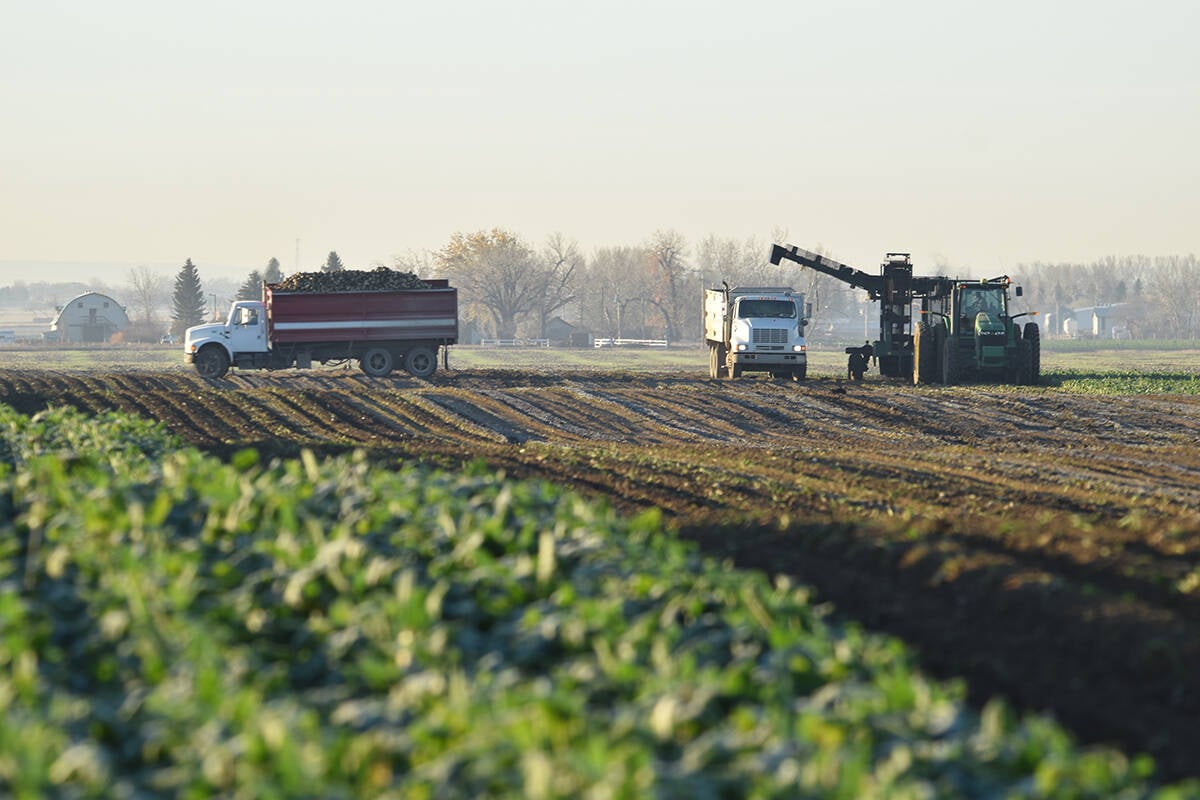As the debate over Roundup Ready wheat continues to generate heat and headlines, scientists with Agriculture Canada are wrapping up a study that addresses key agronomic questions associated with the herbicide tolerant crop.
But a lead researcher in the four-year, multi-site project doesn’t expect the study’s findings will end the debate.
“I think this is such a politically charged issue, it doesn’t matter what answers are out there,” said George Clayton, a plant scientist at the Lacombe, Alta., research centre.
“It will never be a black and white issue because somebody will always have an opinion.”
Read Also

Canada the sole G7 nation without a Domestic Sugar Policy to aid local sugar beet production
Canadian sugar beet industry vastly different to US with free-market system compared to protective government-regulated sugar program
The research, carried out in co-operation with Monsanto, is designed to determine the impact of Roundup Ready wheat on weed population shifts and volunteer wheat persistence.
The trials are comparing zero and conventional tillage, early and late seeding dates, and five rotational schemes involving various combinations of Roundup Ready wheat, Roundup Ready canola and a conventional crop such as field peas.
While three years of data have been collected, federal researchers won’t comment about what has been learned.
“We can’t discuss any results until we get all the data properly analyzed,” said Clayton, adding the data will be formally published and subject to peer review.
“We’re going to talk on facts instead of going out and making statements now that may come back and haunt us later.”
They plan to have the data ready for public release by the winter or next spring.
With two tillage systems, two seeding dates, five rotations and six locations, there are 120 combinations of factors to analyze.
“It’s not going to be an easy data set to work through, but hopefully it will present clear answers to some of the questions that are out there,” Clayton said.
Monsanto is funding the research, but a senior Agriculture Canada official said that doesn’t cast any shadow on the validity of the results.
“There is no restriction on our publishing the information,” said John Culley, the department’s acting director of intellectual property.
“They have no prior rights and there is no confidential information coming out of this.”
The Canadian Wheat Board has been campaigning hard to prevent the unconfined release of Roundup Ready wheat on marketing, agronomic and environmental grounds.
As part of that campaign, it recently submitted to the Canadian Food Inspection Agency a report by three University of Manitoba scientists warning that the production of Roundup Ready wheat would create complex weed management problems for farmers, which would in turn lead to increased tillage and detrimental effects on the environment.
CWB agronomist Mike Grenier said the board is aware of the Agriculture Canada study but has no idea what it will say.
He added the timing of the study’s expected release leaves something to be desired. The CFIA is expected to make a decision on Monsanto’s application for unconfined release this fall, before the results are known.
“We say we need to have all the issues answered before unconfined release,” he said.
Unconfined release means Monsanto would be able to grow Roundup Ready wheat in traditional research and demonstration plots without taking protective measures.
Meanwhile, the board has responded to criticism by the Canola Council of Canada that its report to the CFIA present “biased and inaccurate information” and ignores the benefits that Roundup Ready canola has provided.
In a July 22 letter to the board, JoAnne Buth, the council’s vice-president of crop production, said 45 percent of the canola planted in Western Canada in 2002 was Roundup Ready, and that farmers reported an average $5.80 per acre advantage in net returns from transgenic varieties due to higher yields, less dockage, lower herbicide costs and lower tillage costs.
She said the reduction in tillage and other field operations resulted in fuel savings of around $13 million, while 77 percent of canola growers surveyed said controlling volunteer transgenic canola was no more difficult than managing conventional volunteers.
In an Aug. 1 reply, CWB chair Ken Ritter said the purpose of the report was to highlight potential environmental risks from Roundup Ready wheat, and not to present a comprehensive cost benefit analysis of Roundup Ready canola.
He said the agronomics of wheat and canola are different and the benefits enjoyed by canola growers would not necessarily be enjoyed by wheat farmers.
For example, wheat growers have numerous herbicide options and are able to use conservation tillage practices, which was not the case for canola growers before herbicide tolerant varieties were released.
He also defended the report’s scientific validity, saying it is backed by numerous scientific references.
“Although we know the scientific debate will continue, we believe the authors have more than substantiated their arguments regarding environmental concerns of Roundup Ready wheat and have raised many critical issues that must be addressed before any consideration is given to granting approval for unconfined release,” he said.














